

A MIXED BAG OF INSECTS. . .
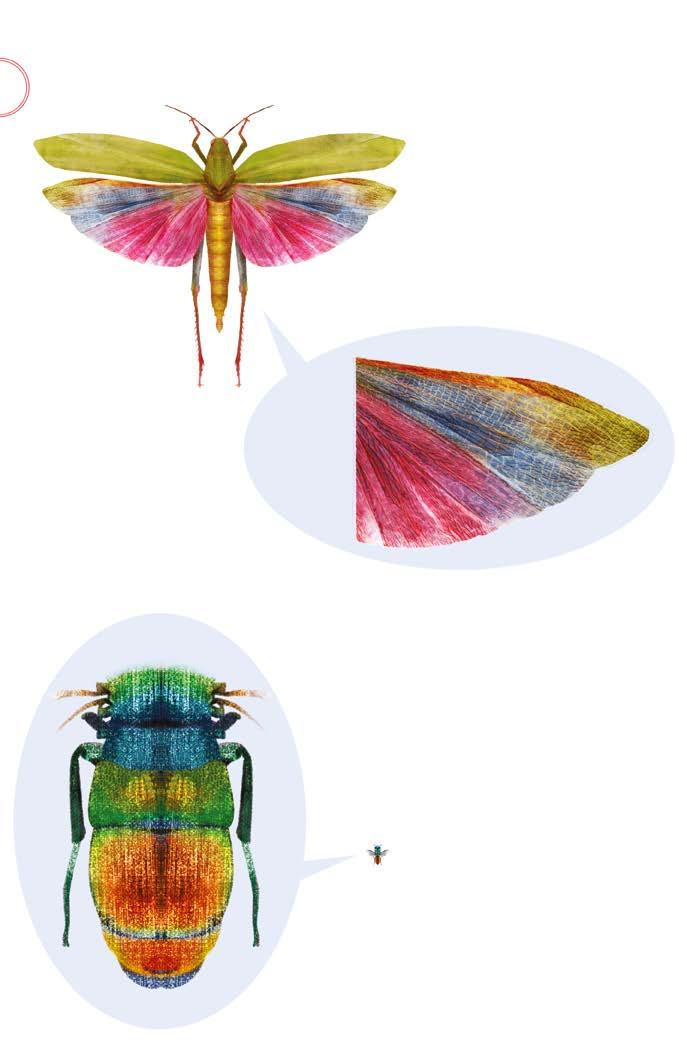
PERUVIAN GRASSHOP
P E R - W I N G S P AN 18CM (7 INCHES)
The rear wings of grasshoppers open out like a fan so that these insects can both jump and fly!
O WASP –0 .7 C M L
An insect’s body is very complex and with so many insects in existence, there is an endless variety of shapes and colors. Just think how different a ladybug and a butterfly are!
If we use a magnifying glass, we can see some of the details of their bodies that are difficult to see with the naked eye. They are very strange and interesting.
The cuckoo wasp lays its eggs in the nests of other wasps, just like the cuckoo, which lays its eggs in the nests of other birds.
CUCKO
ROYAL WALNUT MOTH
CATERPILLAR: 15CM LONG (5.9 INCHES)
MOTH: WINGSPAN 16CM (6.2 INCHES)
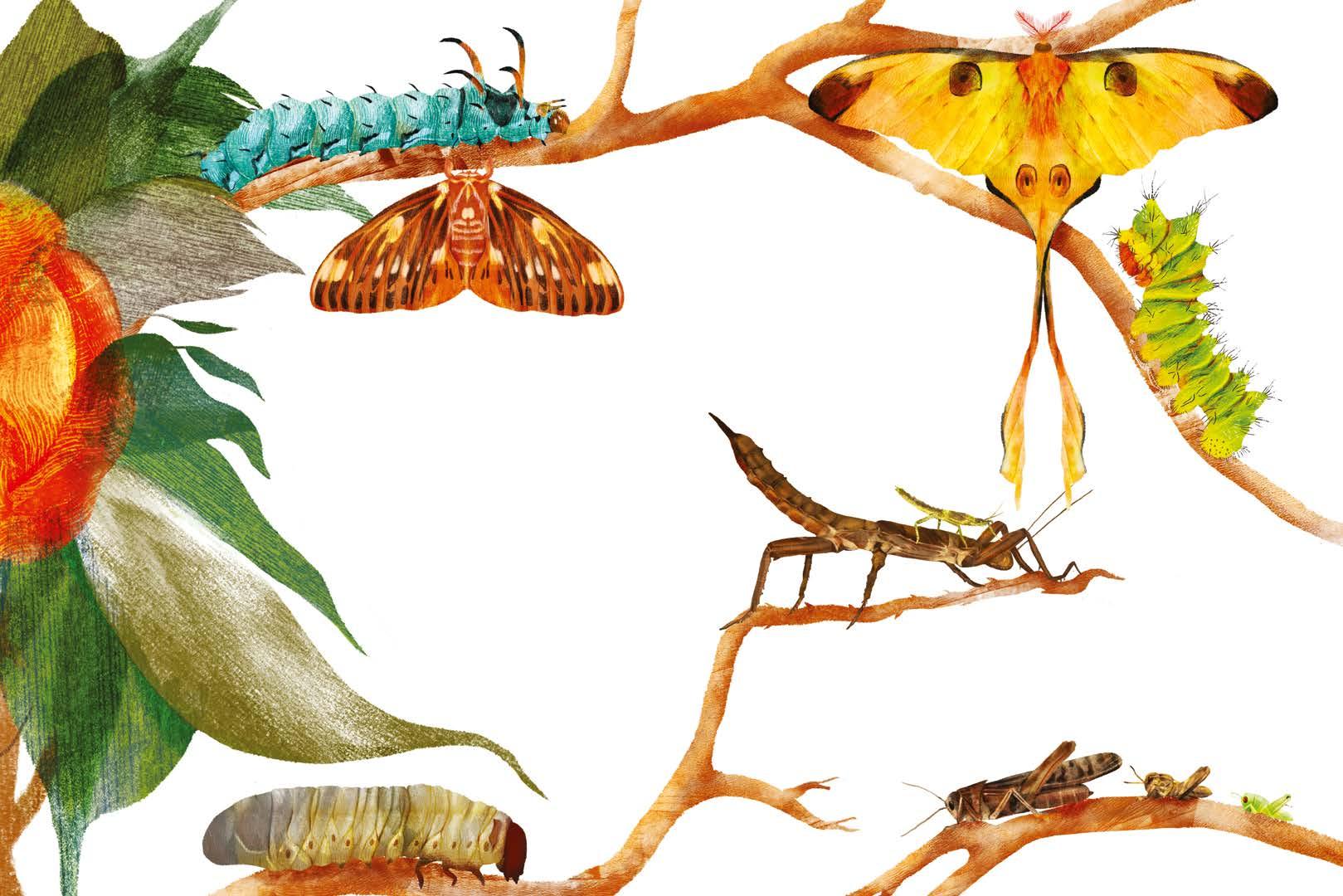
MADAGASCAR MOON MOTH
CATERPILLAR: 11CM LONG (4.3 INCHES)
MOTH: WINGSPAN 20CM (7.8 INCHES)
GIANTSPINYSTICKINSECT
–15CMLONG(5.9 INCHES)
Before it becomes an adult, the migratory locust sheds its skin five times and with the last shedding, it grows its wings. Locusts fly in swarms of millions that, moving all together, invade farmers’ fields, devour everything in sight and leave a desolate wasteland behind.
This huge spiny insect looks like a twig with legs. When it is born it is very small, but it already looks like its parents. It eats leaves and grows very quickly and even when it is an adult, it has no wings. It walks slowly amongst the twigs and leaves, and thanks to its disguise, it is almost invisible.
DOES IT LOOK LIKE ITS MOTHER OR ITS FATHER?
M
INCHES)
BEAUTIFUL, BUT PREDATORY
Dragonflies are definitely some of the most beautiful and elegant insects. Their transparent wings, often in iridescent colors, look like lace, but their beauty hides a secret: they are fierce predators!
Some are very swift and they can stop suddenly in flight, hovering like helicopters, only to flit away and land on the stem of a plant. Others flutter about like butterflies. They all prefer to live near a pond or a stream, because they spend the first stages of their lives in water.
Damselflies live in the rainforests and, when they fly slowly through the shadowy undergrowth, their thin bodies and transparent wings are almost invisible. Only the black and white tips of their very wide wings can be seen, creating the illusion of four small insects flying in formation. They have a special technique for capturing spiders: they approach slowly and seize them with their front legs. The delicate cobwebs are no protection against these dainty but cunning damselflies!
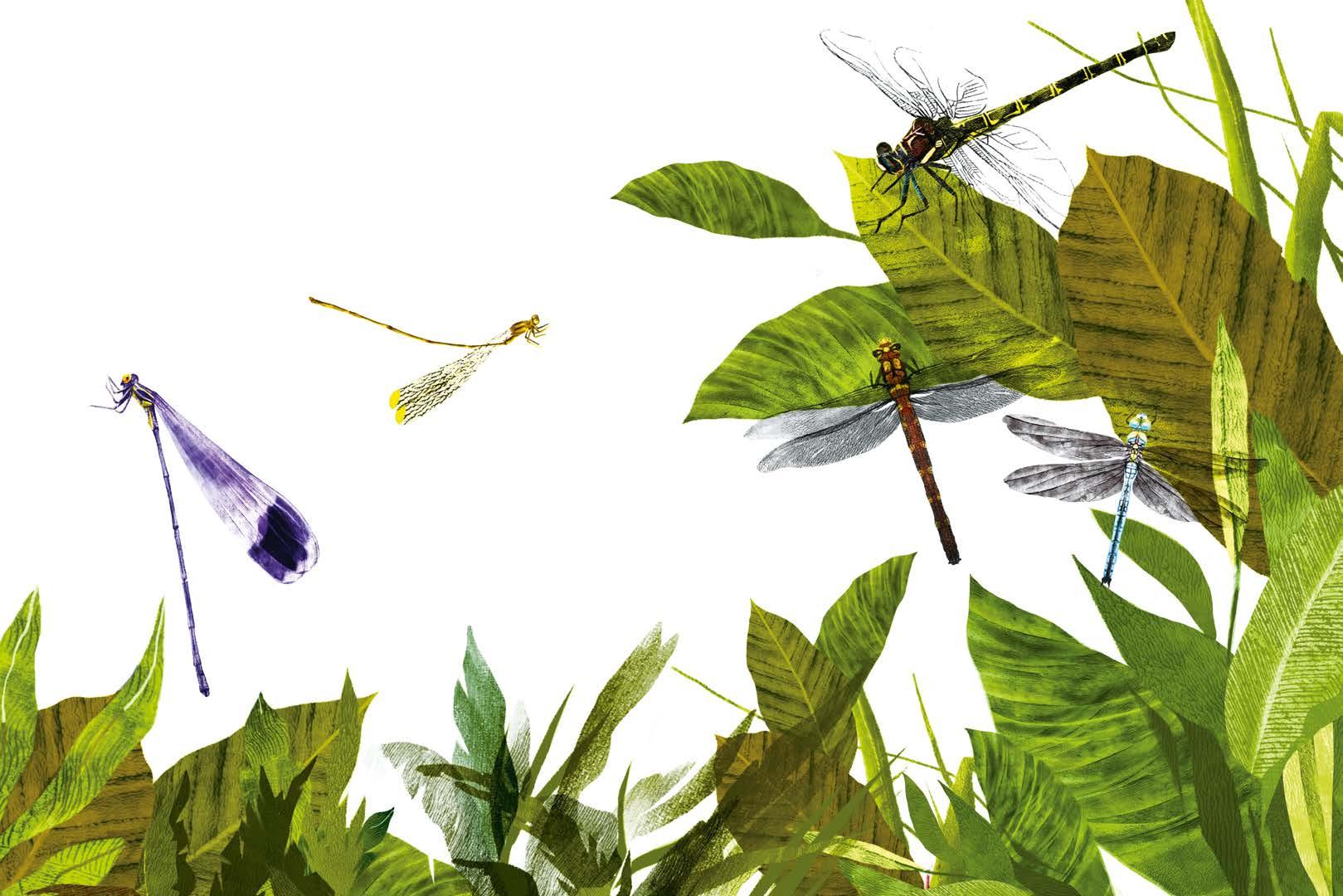

These craters in the sand are the traps laid by the larvae of the Antlion, who wait patiently for an unfortunate insect to fall in so that they can capture it and eat it.
AILANTHUS SILKMOTH WINGSPAN 14CM (5.5 INCHES)
CATERPILLAR: 8CM LONG (3.1 INCHES)
Even in winter, we can find traces of insects. The Ailanthus Silkmoth caterpillars eat all the leaves on a stem, except for the tips, which they wrap in silken threads. Here, they spend the winter, protected from the cold and from their predators, who take them for dry leaves. When spring comes, they will emerge as beautiful moths.
ANTLIONWINGSPAN8CM
(3 .1 IN C H ES)
Adult Antlions look rather like dragonflies, but the difference is that they have antennae.
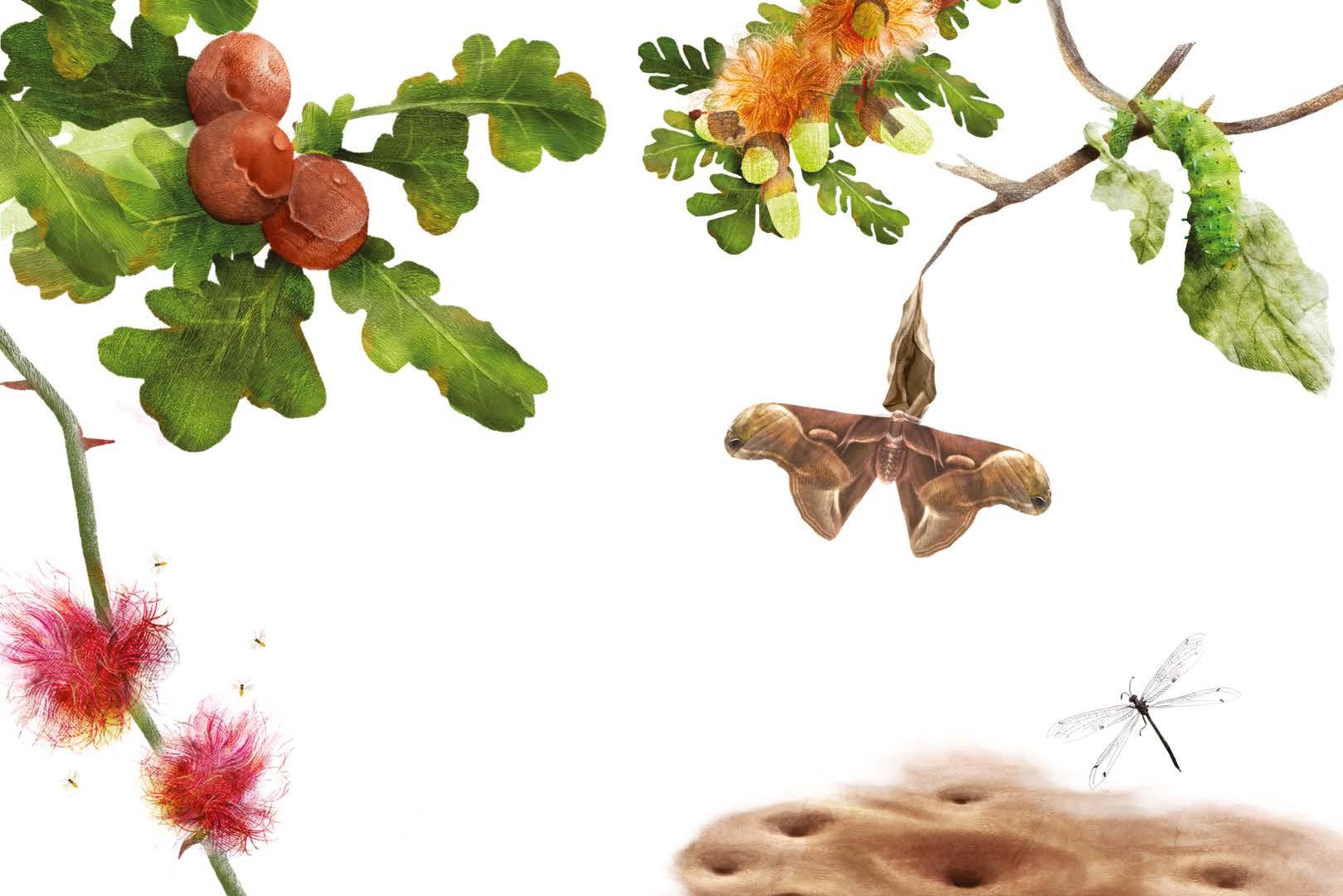
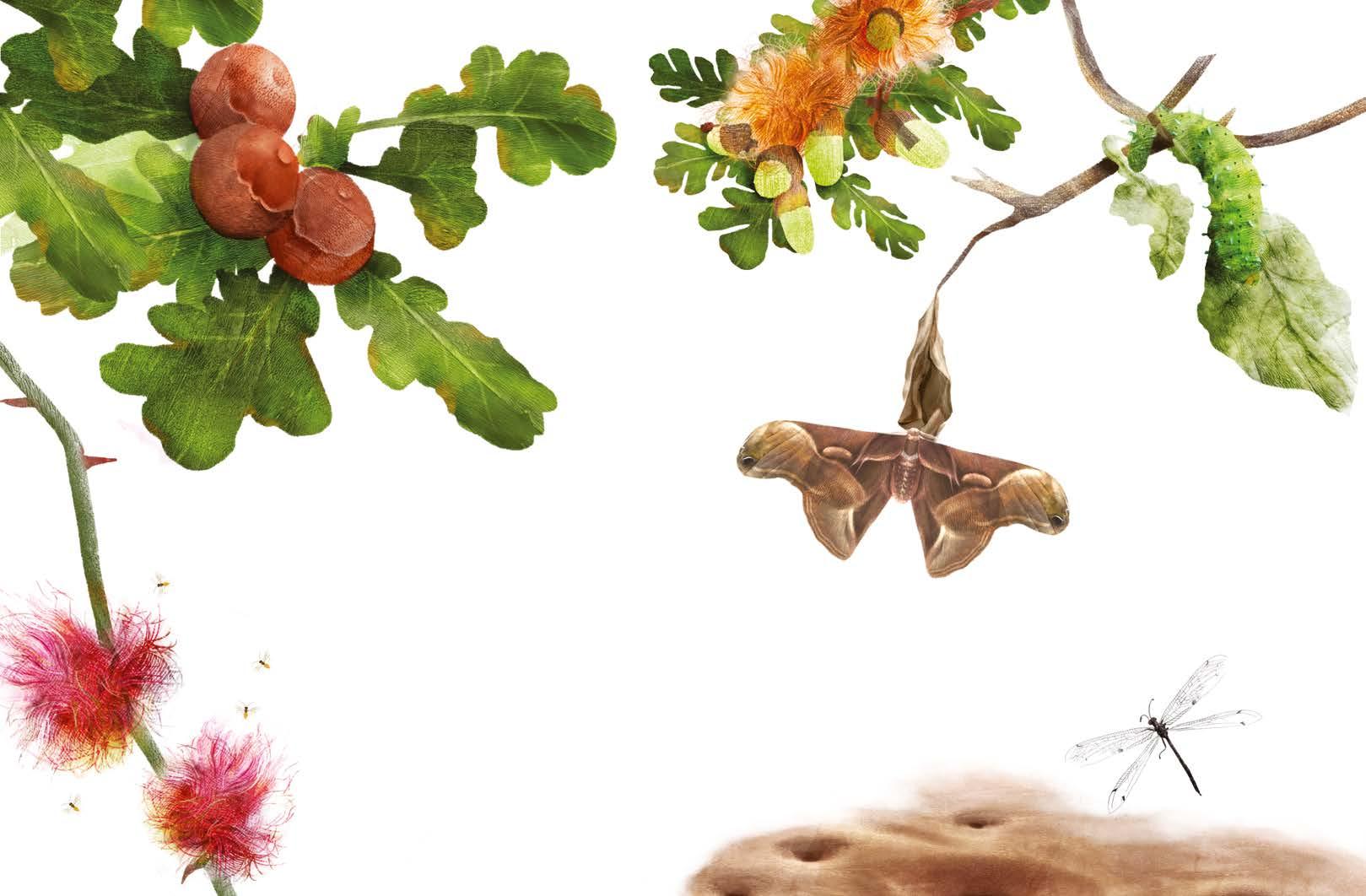
BEES OR WASPS?
It is easy to mix them up, but a close look shows that there are plenty of differences. To begin with, bees fly from one flower to another, taking the nectar from which they make honey, the sweetest food in the world. Wasps, on the other hand, are carnivorous and although some of them enjoy ripe fruit, they are the ones who try to steal the ham from our sandwiches during a picnic. If we look carefully, we can see that their stripes are black on a yellow background, not orange like the bees’ stripes, and they have a narrower waist, what is known as a ‘wasp waist’! Bees and wasps both have a poisonous stinger at the back tip of their bodies. Bees sting to defend themselves, but many wasps sting to kill other insects so that they can eat them or feed them to their larvae.
AS I AN GIANTHORNET
VIOLET
It is often mistaken for a hornet, but in fact it is a bee and it is not aggressive; just leave it alone when it is flying around and looking for nectar!
Hornets build enormous, multistoried nests with a very strong cardboard-colored covering that protects the cells. The colony of hornets uses the nest only for one year before they abandon it.
BUMB L E BEE – 2CMLONG(0 .7INCHES)
– WORK E R BEES
1.3CMLONG(0.5 INCHES) ; QUEENBEE 2CM LO N G (0.7 INCHES)
Buff-Tailed Bumblebees (also known as Large Earth Bumblebees) are very hairy bees indeed! They build their nests in the ground and, like other bees, fly from flower to flower, looking for nectar.

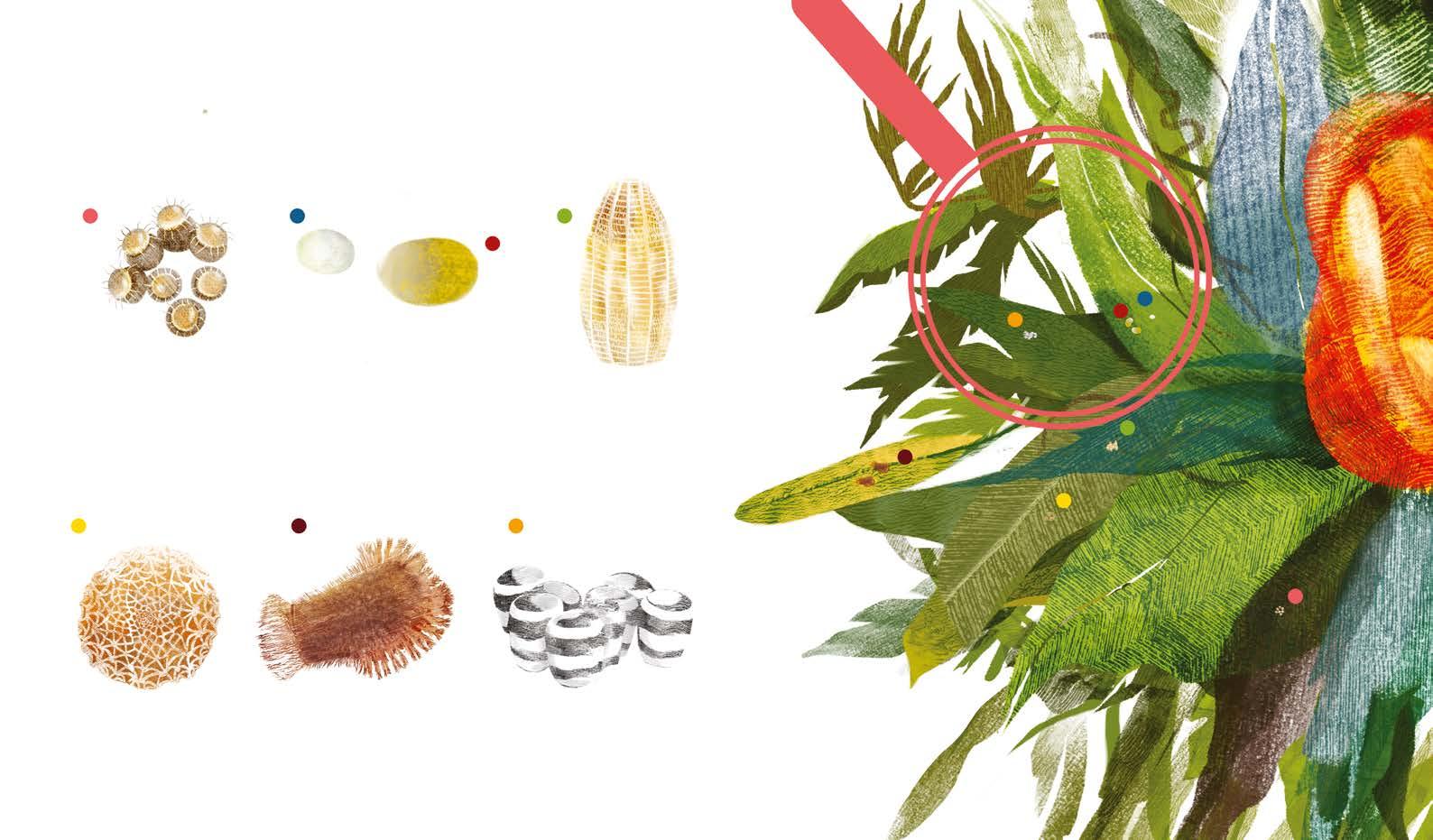
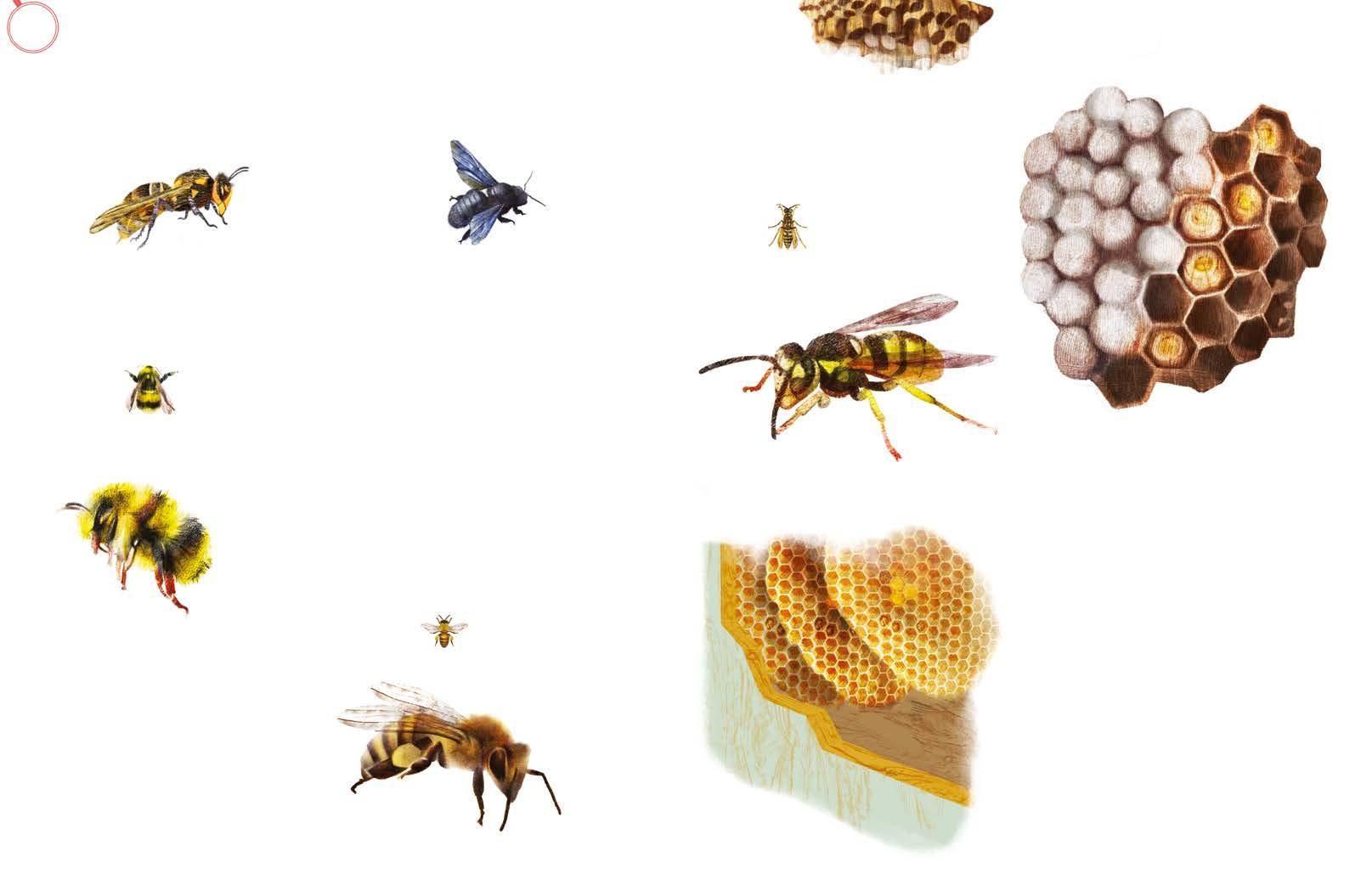
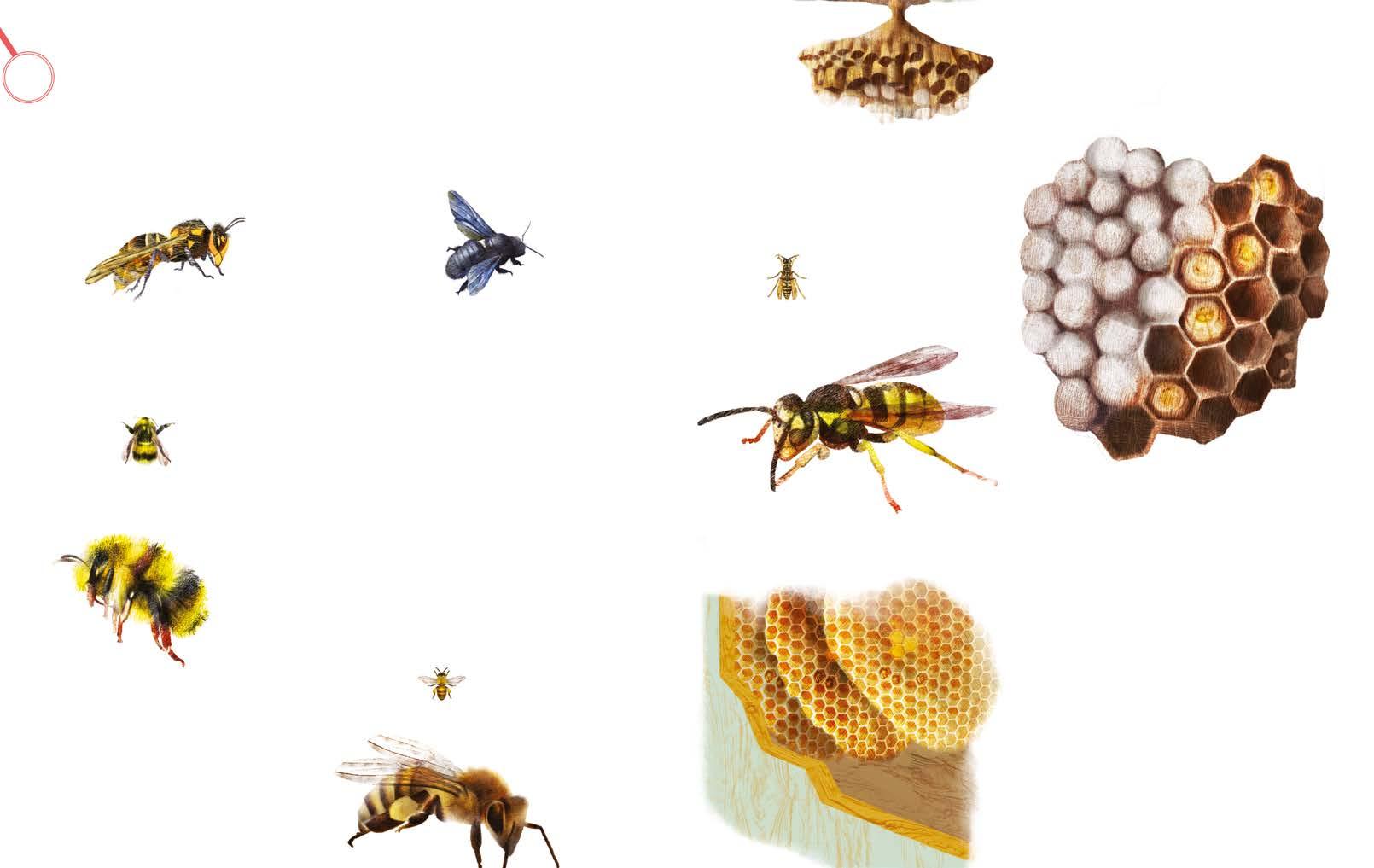
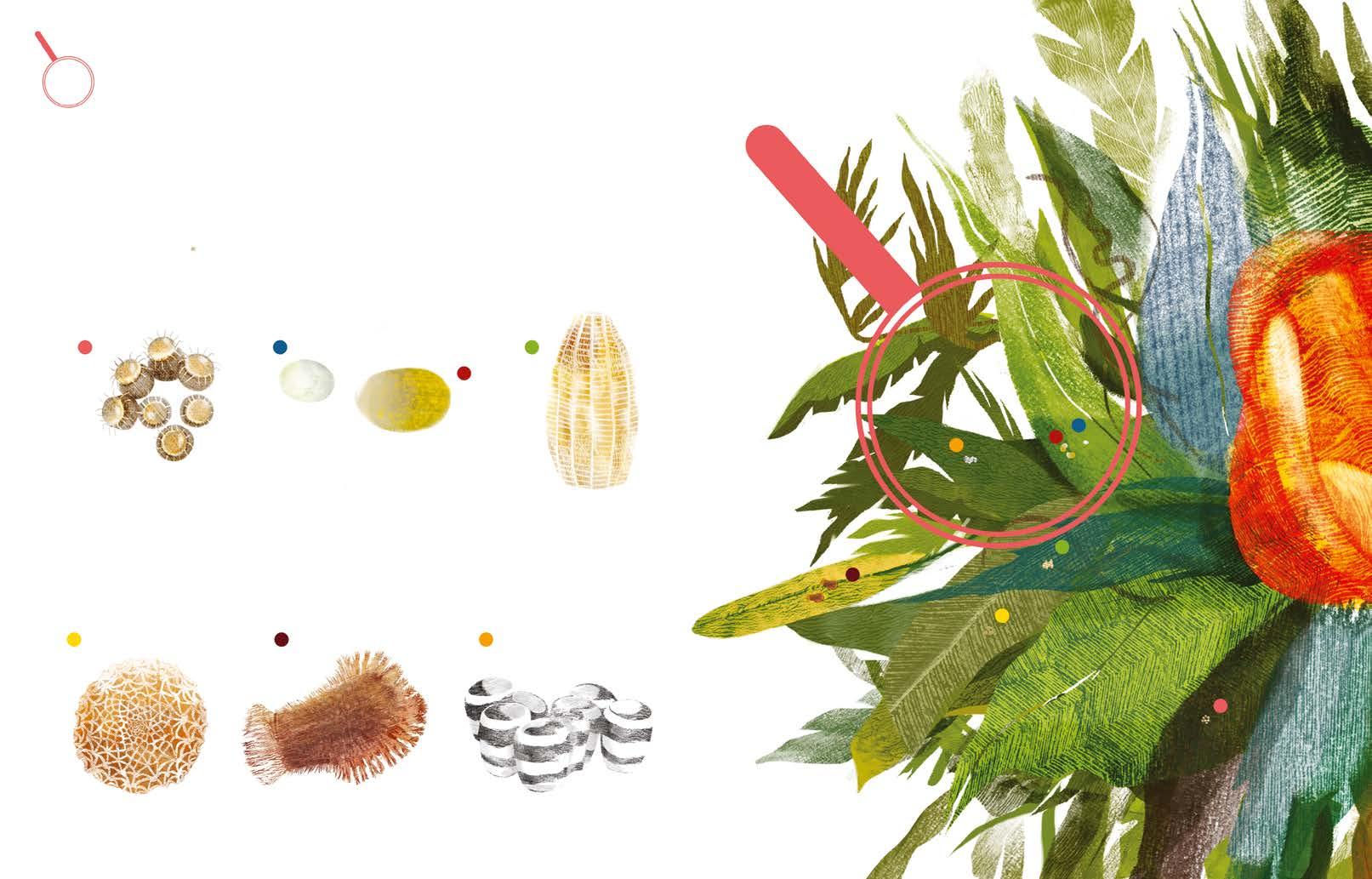
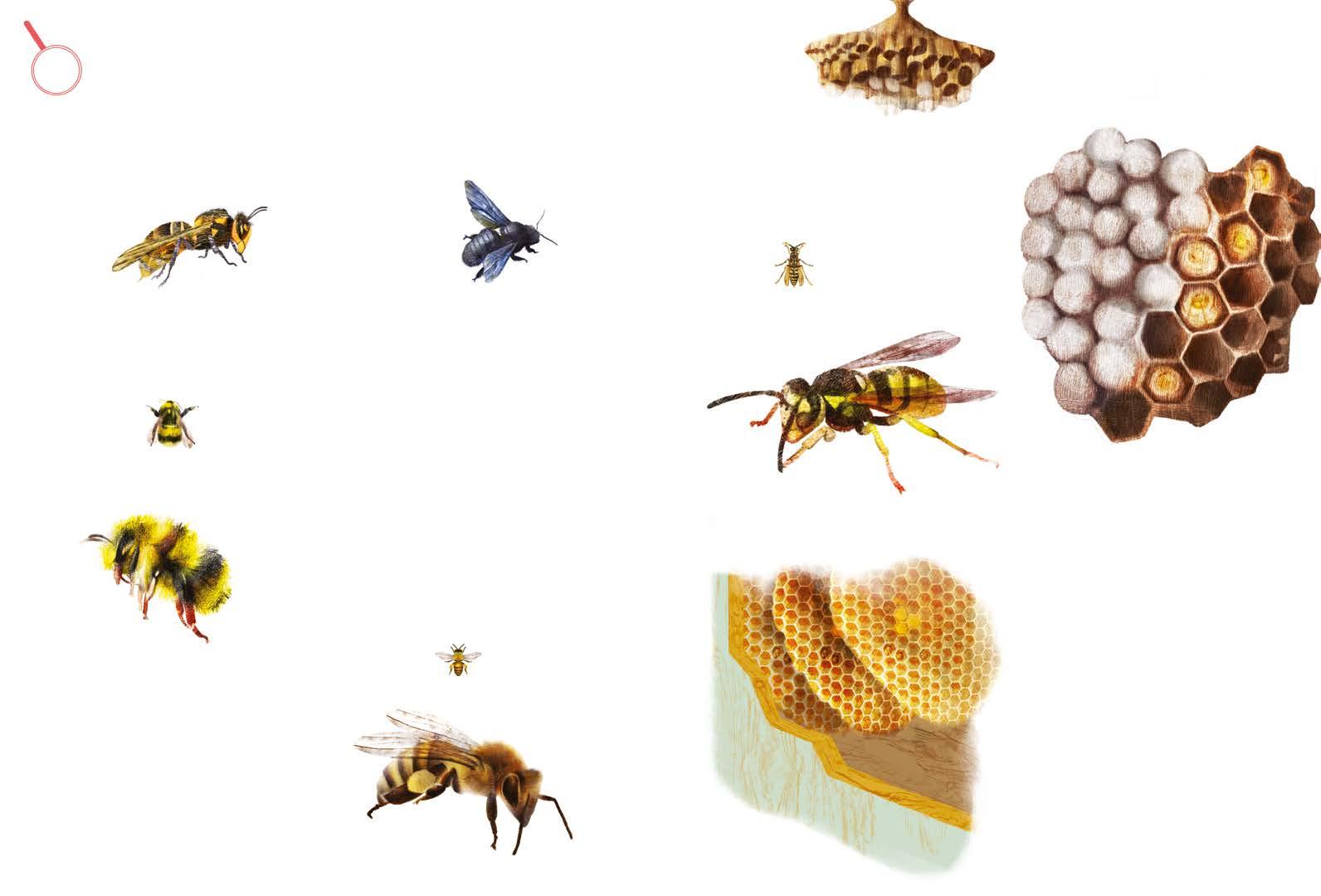
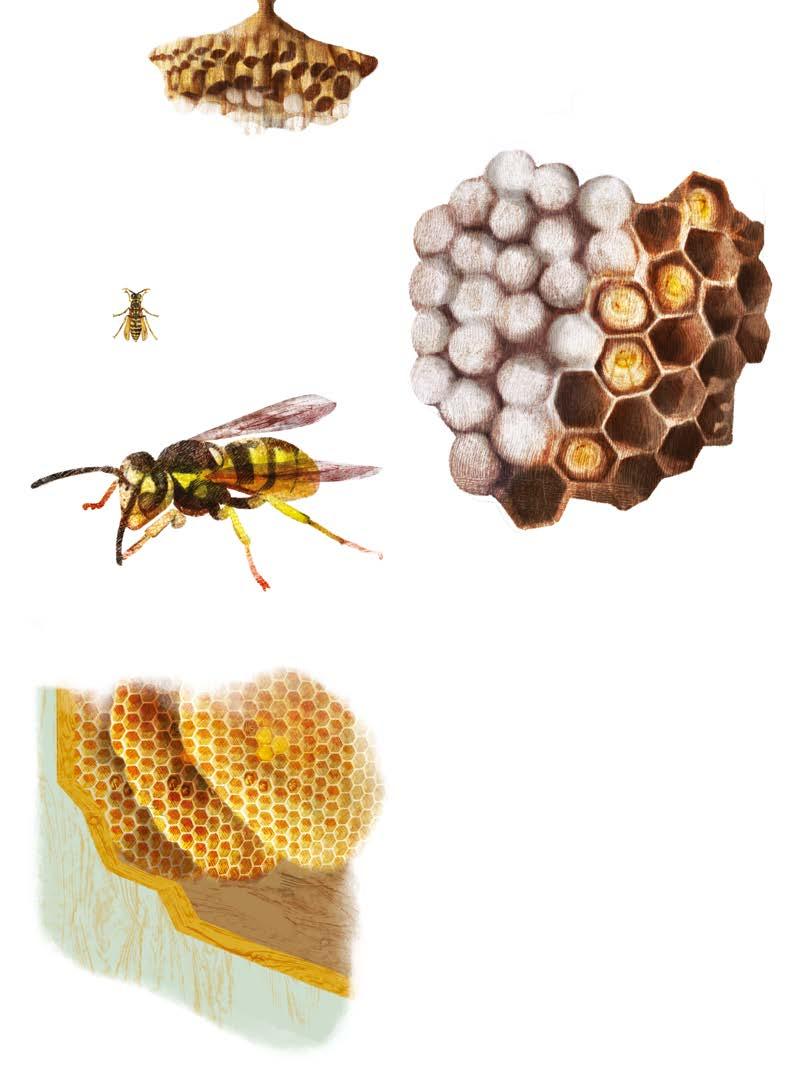
PAPER W ASPS ’ NEST
Paper wasps build their nests by making a past of wood and saliva, to form a sort of cardboard. The cells are hexagonal and contain the larvae that will develop into adult wasps. It is best to keep away from their nests, because they defend them very fiercely!
Honeybees build large wax nests known as honeycombs in the fissures of old tree trunks, on rocks or amongst the branches of the trees. If we give them a home in a wooden beehive, they will certainly make a nest and produce delicious honey for us every year!







HONEYCOMB
P APER WASP,1.5CM LONG (0.5 INC H ES)
ERCULESBEETLE
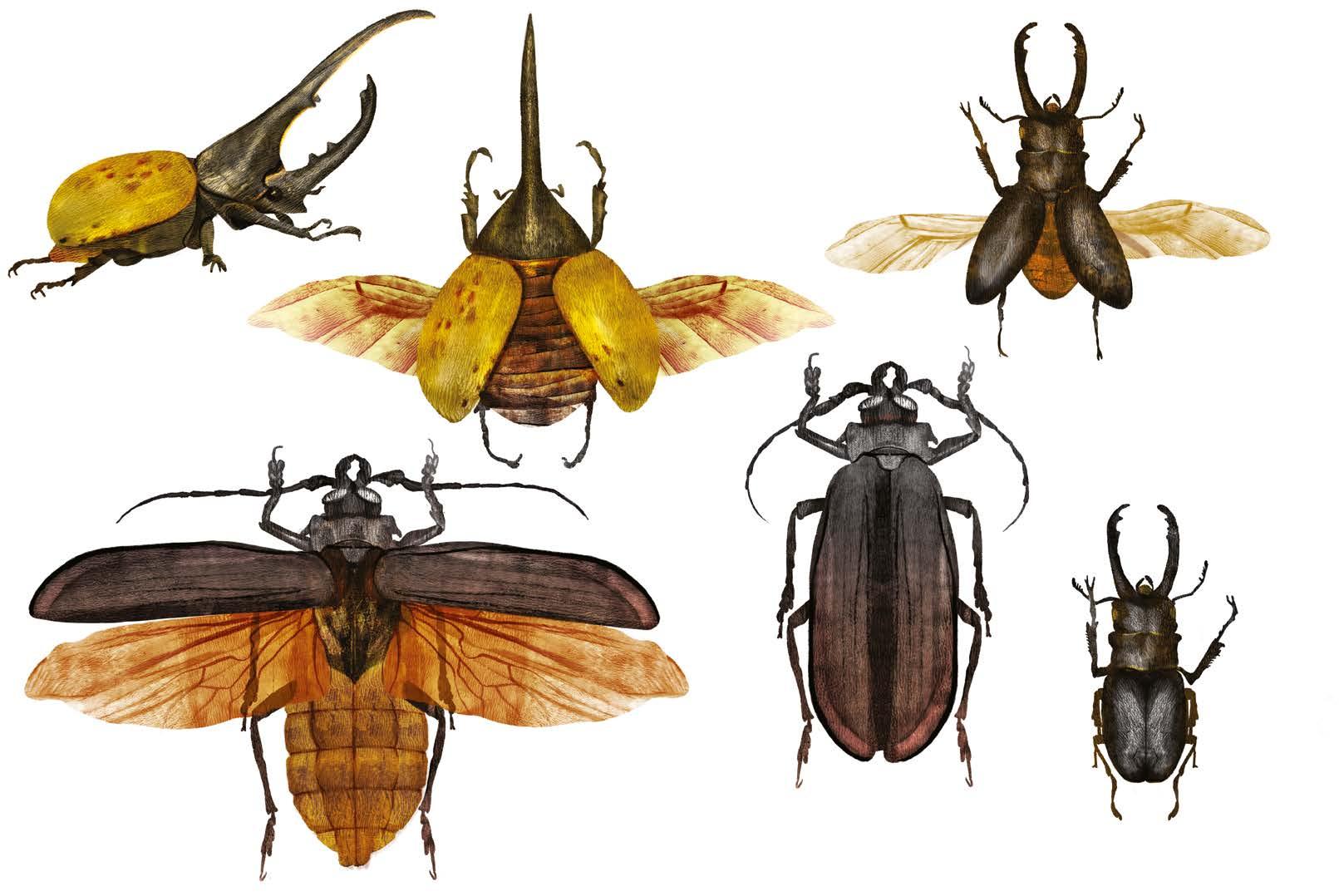
The Hercules Beetle lives in the tropical forests of Central and South America. It is not as massive as the Goliath Beetle but its extraordinary horn makes it much longer. As its name suggests, the Hercules Beetle is very strong and it can move objects ten times its weight. Although it may look rather dangerous, it is really a gentle giant searches the forest floor for the ripe fruit it loves.
TITAN
GIRAFFE STA G B E ETLE - 12CM LONG(4.7INCHES)
W
I
N G S PAN 18CM (7INCHES)

The Titan, another enormous scarab, lives in the same forests as the Hercules Beetle. Its larva takes many years to develop. It digs tunnels in the trunks of dead trees and when it appears as an adult, it only lives a few months! Beware: its sharp jaws can easily bite a pencil in half so you are better off to leave it alone!
GIANT BEETLES
The largest flying stag beetle lives in the tropical forests of Asia. It is smaller than the other beetles on this page, but just look at those jaws! They are 5cm (1.9 inches) long and the males, who are very aggressive, use them to fight each other. Teasing a Giraffe StagBeetle is never a good idea; it loses its patience pretty quickly and when it becomes angry, its bite is quite painful!
